Reviewed by: Jayprakash Prajapati | Last updated on November, 14, 2025
Content marketing might seem like a modern phenomenon, but its roots go way back. Take the iconic G.I. Joe action figure, for example. While you may know G.I. Joe as a toy, it also stands as one of the most brilliant examples of content marketing in history.
In 1982, Hasbro partnered with Marvel to launch the comic series “G.I. Joe – A Real American Hero!” This wasn’t just about selling action figures. Hasbro created an entire world around the characters, establishing a rich backstory through storytelling.
Within two months of the comic’s release, about 20% of their target audience owned multiple G.I. Joe toys. Fast forward seven years, and the series was one of Marvel’s top titles, with two-thirds of boys between 5 and 12 owning at least one action figure.
So, how does this relate to modern content marketing? It shows that storytelling—whether through comics, blogs, or social media—has always been key to successful marketing. While the tools may have changed, the core idea of content marketing remains the same: building connections through valuable stories.
Defining Content Marketing
What exactly is content marketing? While you’ll find various definitions online, here’s my take:
Content marketing is a long-term strategy where you build strong, lasting relationships with your audience. It’s about consistently delivering valuable, relevant content that educates and, ultimately, leads to sales. But here’s the key: content marketing isn’t about pushing a hard sell. Instead, it focuses on generating value, so when a customer is ready to buy, your brand is the first they trust.
Unlike traditional ads, which can feel pushy, content marketing shows your audience that you care about their needs. With a noisy world full of distractions, content marketing helps your brand stand out by building trust and showing customers that they matter.
Content marketing is different from copywriting, too. While copywriting is primarily focused on conversions, content marketing is about building an audience. But don’t worry, you can use both. When combined, they can work wonders in educating and engaging your audience while driving sales.
Why Is Content Marketing Important?
Now that we understand what content marketing is, let’s talk about why it’s so important.
Content marketing is the complete customer acquisition channel. It helps drive traffic, build trust, establish authority, and generate revenue—all while avoiding a hard sales pitch. Unlike paid ads or social media campaigns, content marketing reaches customers at every stage of their journey, starting from the very top of the funnel when they aren’t even thinking about making a purchase.
A well-crafted piece of content is often the starting point for your relationship with a customer. It guides them through each step of the buying process, nurturing them along the way.
When it comes to e-commerce, email marketing is a clear frontrunner, delivering an impressive average ROI of $38 for every $1 spent. This remarkable performance outpaces both social media and paid advertisements. Why? The secret lies in personalized targeting, which enables businesses to send tailored offers directly to their customers, driving higher engagement and conversions.
B2B ROI
For B2B companies, content marketing emerges as the most effective tool. Platforms like blogs and whitepapers are instrumental in driving results. In fact, 73% of B2B marketers agree that content marketing is their go-to strategy for generating quality leads and boosting sales. This approach builds trust, educates potential clients, and positions businesses as industry leaders.
Healthcare Marketing ROI
In the healthcare sector, strategies such as SEO and content marketing have proven to be highly effective, generating an average ROI of 4x. By focusing on driving traffic to relevant resources and optimizing patient acquisition efforts, healthcare providers can reach the right audience while establishing authority and trust.
Retail ROI
Retail businesses see exceptional gains by blending digital and in-store marketing campaigns. This omnichannel approach has led to a 24% year-over-year increase in ROI, as it ensures customers have a seamless and engaging experience across platforms. By integrating these strategies, retail businesses can connect with their audience more effectively and drive consistent growth.
A Brief History of Content Marketing
How old do you think content marketing is? You might guess it’s a recent trend, but in reality, it dates back centuries. The first known example of true content marketing comes from 1732, with Benjamin Franklin’s Poor Richard’s Almanack.
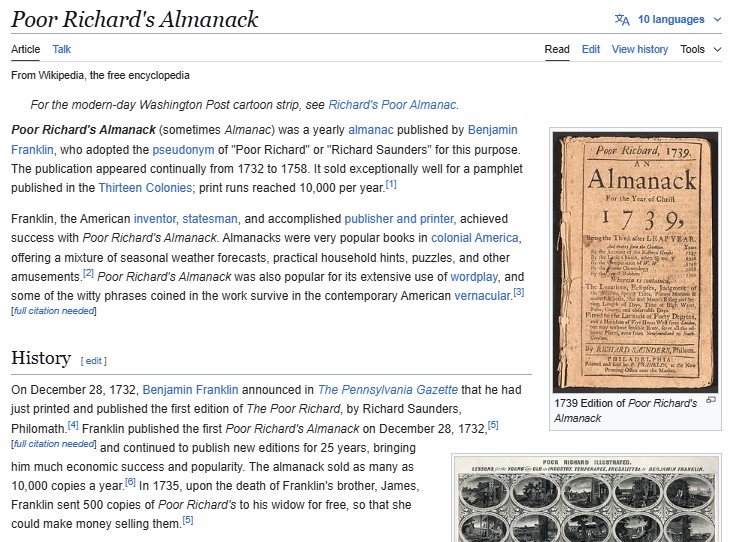
This photo was taken from Wikipedia
By the late 1800s, companies like John Deere were already catching on to the power of content marketing. In 1895, John Deere launched The Furrow, a lifestyle magazine aimed at farmers. This free content built trust with their audience, ultimately helping to drive sales.

Over time, content marketing has evolved. From magazines to blogs to videos and infographics, the format may change, but the underlying principle remains: deliver value and build relationships. The formula for great content marketing hasn’t changed much over the years:
- Address the pain point.
- Agitate the pain.
- Offer a solution.
What Makes a Successful Content Marketing Strategy?
Creating successful content marketing is about more than jumping on the latest trends. A strong strategy begins with clear goals and a well-defined target audience.
Start by outlining what you want to achieve. Is your goal brand awareness, growing your email list, or increasing conversions? Next, define your target audience. For example, my content marketing is aimed at entrepreneurs who run online businesses and want to drive more traffic and revenue.
Once your goals and audience are clear, it’s time to build a content plan. If you want to increase email subscribers, for instance, you could create an eBook, develop a landing page, and write a series of blog posts and emails that drive traffic to that landing page.
Types of Content Marketing
Content marketing doesn’t just exist in the form of blog posts. There are offline, online, and hybrid content types to explore.
Offline Content Marketing Examples:
- Netflix’s Offline Experiences: Netflix has mastered the art of offline content marketing. They often create interactive experiences around their shows, like billboards or murals for Money Heist, making people feel part of the action. They’ve even placed ads in unusual places through ambient marketing to reach new audiences.
- Hasbro’s TV Commercial Strategy: When Hasbro launched the G.I. Joe comic book series, TV regulations restricted toy ads. To bypass these limitations, Hasbro focused on promoting the story rather than the toys themselves, creating a commercial that was purely about the comic series. This unconventional approach allowed them to show more animation and reach a wider audience.
Content marketing is a powerful tool that has stood the test of time. By focusing on delivering valuable content that educates, entertains, and builds trust, you can create lasting relationships with your audience. Whether you’re leveraging blogs, social media, or offline experiences, storytelling remains at the heart of content marketing—just as it did with G.I. Joe in the 1980s.
Online Content Marketing: Mastering the Digital Landscape
Content marketing has always been a cornerstone of the internet age. While offline strategies may eventually transition to online platforms, digital content marketing has been at the heart of the web from the very start. Today, it’s crucial for brands to leverage online content effectively, and many have done an exceptional job at it. Let’s dive into some of the best examples of online content marketing.
1. Lead Magnets: Turning Content Into Conversions
If you’re familiar with online marketing, you’ve likely come across the term “lead magnet.” At its core, a lead magnet is a compelling piece of content that your target audience is eager to exchange their email address for. These can take the form of eBooks, cheat sheets, or white papers, designed to provide value while building your email list.
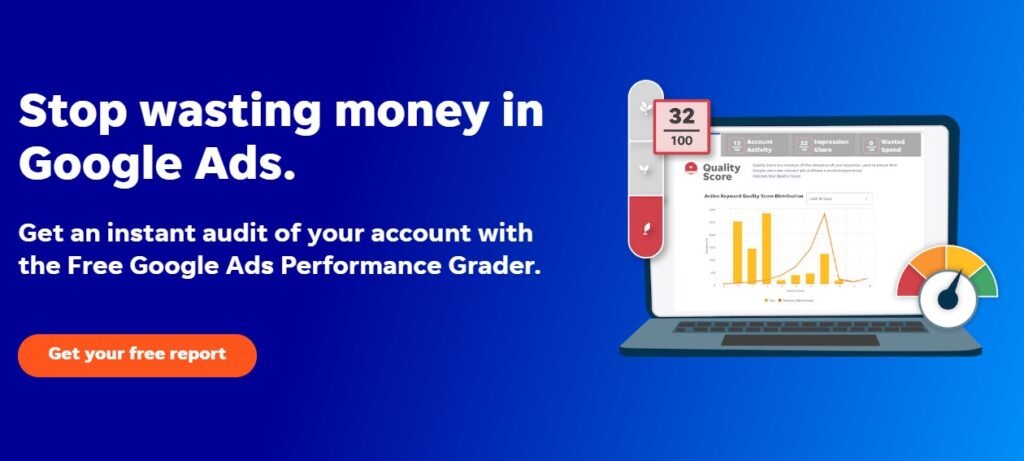
One prime example of a company excelling with lead magnets is WordStream. Offering a variety of free resources, WordStream helps users solve key marketing challenges, from maximizing Google Ads to improving conversion rates. By simply filling out a brief form, users gain access to these valuable resources.
WordStream has mastered integrating lead magnets into blog posts—if you’re reading an article on crafting effective subject lines, they’ll offer a gated resource on email marketing, making it easy for users to dive deeper.
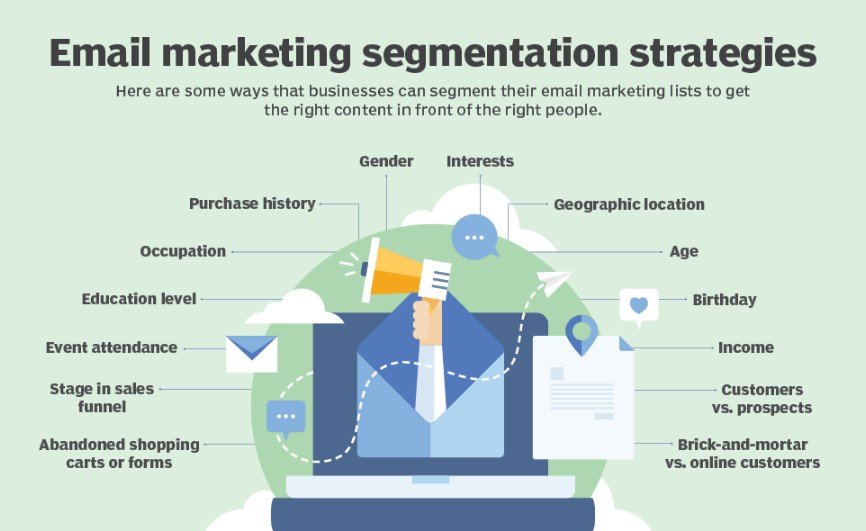
2. Podcasts: Engaging Audiences Without Writing a Word
Podcasting has emerged as a powerful content marketing tool. While figures like Tim Ferriss and Joe Rogan have built entire businesses through podcasts, other brands use them as a creative way to connect with their audience.
For example, Shopify Masters leverages podcasting to introduce entrepreneurs to the world of e-commerce. In each episode, Shopify interviews a different e-commerce founder, providing listeners with valuable insights, tips, and resources. This podcast not only builds Shopify’s authority in the industry but also attracts aspiring entrepreneurs to use its platform.
3. Guides and eBooks: Offering Knowledge and Building Trust
Free guides and eBooks serve as an excellent way to introduce potential customers to your product or service while establishing authority in your field. Intercom, a customer support platform, does this exceptionally well. They offer comprehensive guides on everything from improving online customer service to utilizing their product more effectively.
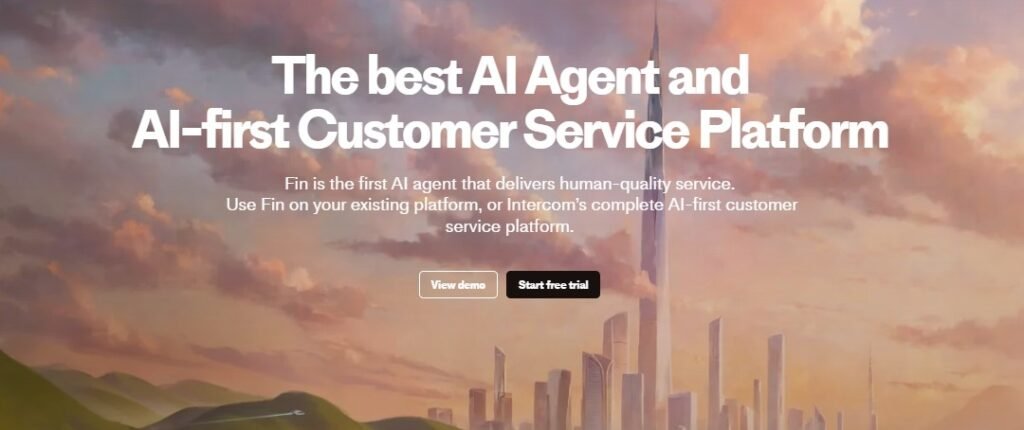
These in-depth resources provide immense value, positioning Intercom as a trusted expert. By combining expert advice with their product features, they build trust and educate users at the same time—making it easier to convert leads into customers.
4. Video Content: A Bold Leap Into Brand Storytelling
In the world of video marketing, Red Bull has taken content marketing to extraordinary heights. One of their most famous campaigns was the Felix Baumgartner Stratos Jump. On October 14, 2012, Baumgartner jumped from a hot air balloon 24 miles above Earth, breaking the sound barrier and setting world records.
As the sole sponsor of this historic event, Red Bull not only garnered massive media coverage but also generated countless social media interactions. This high-octane event exemplified the power of video content to captivate audiences, while also strengthening the Red Bull brand as one of thrill-seeking and pushing boundaries.
5. Brand Collaborations: Working Together to Create Greater Value
The old saying, “If you want to go fast, go alone. If you want to go far, go together,” is particularly relevant in the world of brand collaborations. By teaming up with a non-competing brand within your industry, you can create more valuable content and expand your reach to an established audience.
KlientBoost, a paid advertising agency, is a perfect example. They have collaborated with major online marketing brands like HubSpot, Instapage, and Ahrefs to create useful content and resources. This partnership allows them to deliver higher-quality assets and leverage each brand’s audience for increased exposure.
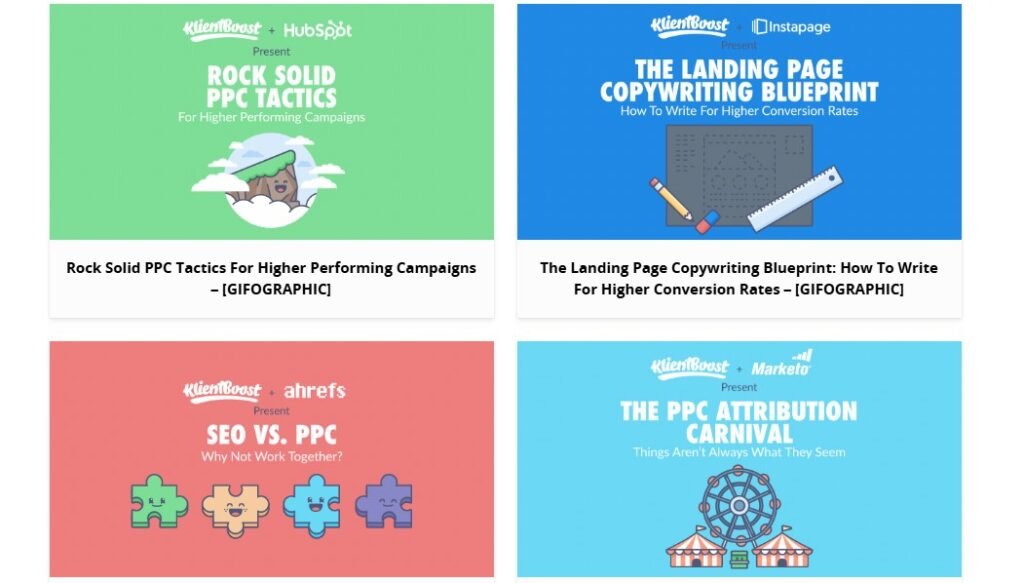
From lead magnets to podcasting and brand collaborations, online content marketing offers endless opportunities for brands to engage, educate, and convert their target audience. By embracing these digital strategies, businesses can build trust, establish authority, and create meaningful connections with customers.
Hybrid Content Marketing: The Best of Both Worlds
Let’s dive into the concept of hybrid content marketing, where both online and offline strategies are blended seamlessly to create a powerful, unified campaign. Adobe’s MAX conference serves as an excellent example.

While the event itself is a fantastic offline marketing tool, Adobe takes it a step further by uploading hundreds of conference sessions online for free, giving people around the world access to valuable content.
This move not only builds trust with potential customers but also encourages them to take the next step with Adobe’s products.
Content Mapping and the Customer Journey
Content mapping is all about understanding your audience so well that you can create content tailored to every step of their buyer’s journey. Most people don’t go straight from learning about a product to making a purchase. They first discover the brand, then spend time considering their options.
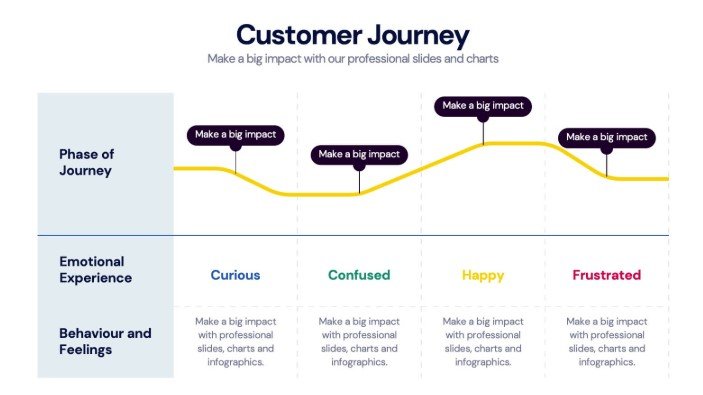
Along the way, they might see retargeting ads, read reviews, or browse through informative content. Your job as a marketer is to provide content that engages and nurtures them throughout this journey, from awareness to purchase, and ideally, to loyalty.
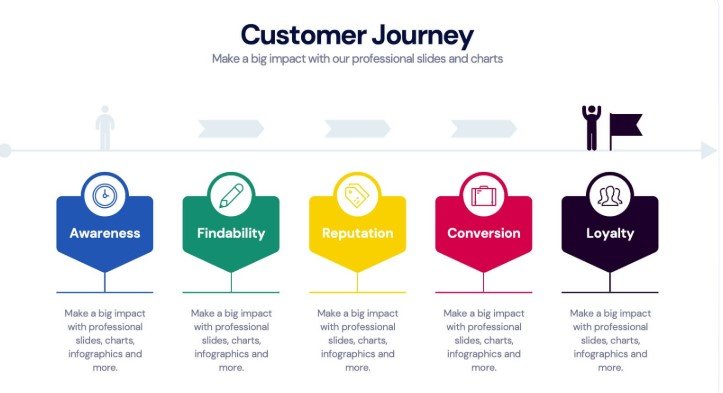
When done right, loyal customers become advocates for your brand, recommending your product to their social circles. However, it’s important to note that different stages of the buyer’s journey require distinct content strategies.
Awareness Stage: Building Trust Through Content
The first step in the buyer’s journey is awareness. At this stage, potential customers may not be ready to buy, but they are open to learning. Creating content that addresses their problems or questions is a valuable way to introduce your brand without pushing for a sale.
For example, a simple search like “how to write content for blog” on Google brings up content from companies like ahrefs. As a potential buyer, you’re more likely to trust content that solves your immediate problem. Whether it’s a blog post or a video tutorial, helping people early on builds awareness and trust in your brand.
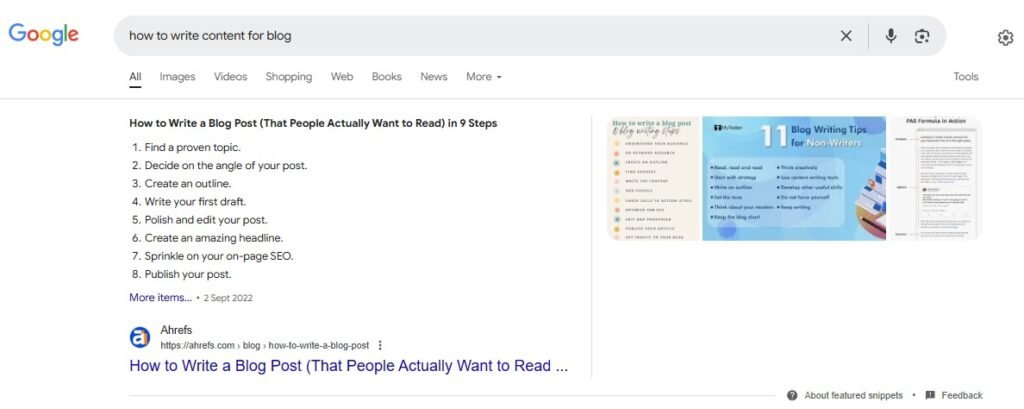
To effectively track brand awareness, focus on key metrics such as page views, unique visitors, social shares, and time on site. These will give you insights into how well your content is performing at the awareness stage.
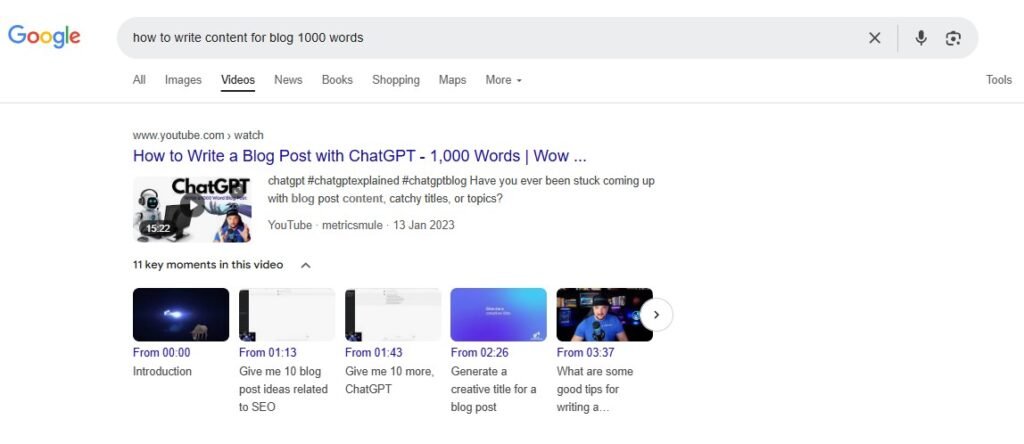
Social media is another powerful tool for this stage. People spend a significant amount of time on platforms like Facebook, Instagram, and Twitter, so posting regularly can help raise brand visibility. Just remember, users aren’t on social media to be sold to, so keep your content helpful, entertaining, and aligned with your brand identity.
Consideration Stage: Building Trust and Engagement
Once consumers are aware of your brand, they enter the consideration stage. They’re not ready to buy yet but are weighing their options. This is the time to provide more in-depth content that builds trust and engages prospects.
EBooks, white papers, and newsletters are particularly effective at this stage. By offering valuable resources, you give prospects more information about your brand, its values, and the solutions you offer. As trust builds, they are more likely to make a purchase when the time is right.
Long-tail keywords also play a crucial role here. Consumers in the consideration stage often search for very specific information. For example, instead of just searching for “shoes for sale,” they might search for “buy shoes from Adidas.” These longer keywords have lower competition and a higher chance of conversion.
The goal in this phase is to guide prospects closer to making a purchase decision. Offering resources like case studies, blog posts, or videos can keep them engaged and move them down the sales funnel.
Decision Stage: Sealing the Deal
The decision stage is where all your efforts come together. By this point, your potential customer has already developed trust in your brand and is familiar with your product. Now it’s time to close the deal.
At this stage, the content you create should be highly specific and geared towards conversion. People in the decision stage are using very precise, long-tail keywords, and they’re likely searching for information like “how to start an eCommerce store” or “Shopify vs. WooCommerce.” Your content should target these high-intent keywords and provide a compelling call to action (CTA).
For example, Shopify does an excellent job of catering to people in the decision stage. Their content, which targets high-commitment keywords, is supplemented with CTAs like “Start Your Free Trial” or “Get Started with Shopify,” designed to encourage the reader to take immediate action.
At this stage, your content should include CTAs that urge the reader to make a purchase, schedule a demo, or take advantage of a limited-time offer. You could also consider offering discounts, free trials, or exclusive promotions to seal the deal.
Final Thoughts: Content Marketing That Converts
Hybrid content marketing allows you to combine the strengths of both online and offline strategies to create a comprehensive approach. By understanding the different stages of the buyer’s journey and tailoring your content accordingly, you can engage prospects at every point, building trust and increasing the chances of conversion.
The key is to create content that speaks directly to your audience’s needs at each stage whether it’s building awareness, nurturing leads, or sealing the deal.
When you get it right, content marketing becomes a powerful tool that not only attracts customers but turns them into loyal advocates who spread the word about your brand. So, whether you’re running a small business or a large enterprise, make sure your content strategy is aligned with the buyer’s journey to drive real results.
Exploring Additional Content Marketing Strategies
Now that we’ve covered the fundamentals of content marketing, its power, and how it can guide your customers from awareness to conversion, let’s dive into some other effective content types.
Social Media: A Game-Changer for Content Marketing
Social media stands as one of the most impactful tools in content marketing. It enables you to quickly and easily reach a wide audience with your content. Not only that, but it fosters genuine connections with potential customers, creating valuable relationships.
With social media, you can tap into an extensive pool of users within any target market, and if you choose to run ads, you have complete control over where your content appears. Take Innocent Drinks, for instance. This brand expertly uses social media to project a playful and relatable image, engaging their audience before ever asking them to make a purchase.
Why does this approach work? Simply put, businesses that connect emotionally with their audience are more likely to see sales. Humor, emotion, and relatable content create a bond that strengthens the chance of consumer loyalty.
Social media thrives on relationship-building. By growing an organic following, you can drive more traffic and generate sales. Once you have an engaged audience, marketing to them becomes much easier and more cost-effective.
But always remember people follow you because they love your content, not just your products. So, invest in entertaining and engaging your audience, and they’ll reward you with their business.
The Power of Live Video in Content Marketing
When planning your content marketing strategy, don’t limit yourself to just written content—video, especially live video, can be incredibly powerful. According to Wyzowl’s State of Video Marketing Survey:
Here’s the content in a table format for easy reading:
| Aspect | Details |
|---|---|
| Video Marketing Usage | 89% of businesses use video, and 95% of marketers consider it crucial. |
| Barriers to Video Marketing | – 37% don’t know where to start. – Over 25% cite lack of time. – 16% are unsure of ROI. – 11% find it too expensive. |
| Plans for 2025 | 68% of non-video users plan to start using it in 2025. |
| Types of Videos Created | – 54% create live-action videos. – 24% use animation. |
| In-House vs. Outsourcing | – Over half create videos in-house. – 14% use only external vendors. |
| Top Video Use Cases | – 73% create explainer videos. – 69% create social media videos. – 60% create testimonials. |
| AI in Video Marketing | – 51% use AI for video creation, down from 75% last year. |
| Video Marketing Budgets | – 53% allocate a third or less of their budget to video. – 93% plan to maintain or increase spending in 2025. |
| Video Costs | – 36% think costs are decreasing. – 28% see costs rising. |
Thanks to tools like InVideo, video marketing has never been more accessible or effective. However, live video takes it a step further. Grandview Research predicts that by 2030, the video streaming market will reach $416.84 billion, and the appeal of live video continues to grow.
HubSpot data reveals that 58% of consumers watch live videos at least three times a week, with social media platforms like YouTube, Facebook, and Instagram being the most popular viewing spots.
Why is live streaming so loved? Authenticity is key. It’s raw, unedited, and gives viewers a sense of transparency—they get to see the person behind the brand in real-time. And authenticity is exactly what today’s consumers crave.
Here’s a tip: If you want to build a strong rapport with your audience, consider hosting weekly live videos. Set a regular time so your followers know when to tune in, creating anticipation and consistency.
Boosting Reach with Paid Advertising in Content Marketing
While content marketing is largely an inbound strategy, it doesn’t mean you have to solely rely on organic traffic. Combining your content efforts with paid advertising can significantly expand your reach and boost conversions.
For example, take a look at Grant Cardone’s ad for his business certifications. It’s a piece of content wrapped in an ad. This is an example of inbound content meeting outbound marketing, attracting people to your site while you still offer value upfront.
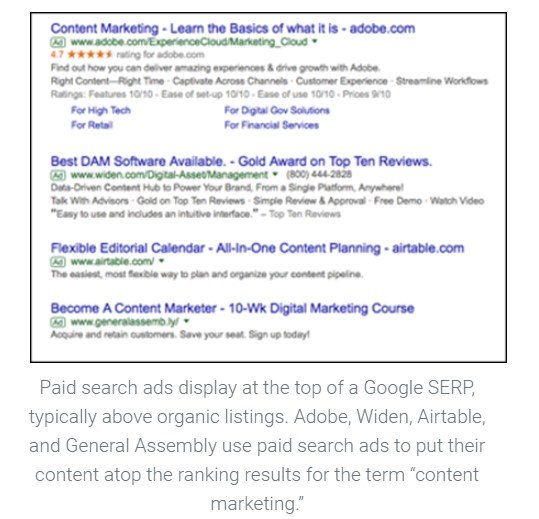
But why would you pay to drive people to free content, especially when they might not convert immediately? The answer is simple: When starting a new business, growing your audience organically can take time. Paid ads allow you to give that growth a quick boost by driving traffic to your best content.
Consider Shopify’s strategy, where they promote valuable content through paid ads. It’s not just about driving traffic to a sales page; it’s about leading people to helpful, informative content. And it’s not just Facebook ads that can help with this. Google Ads is another platform where you can run similar campaigns, boosting both traffic and sales.
In the early stages of your business, these ads can be a game-changer. The first few months can be the hardest, but with paid advertising, you don’t have to face those challenges alone.
Content Marketing Tips and Strategies to Elevate Your Success
Let’s wrap up this article by diving into some of my favorite content marketing strategies that can help take your efforts to the next level.
1. Keep an Eye on Analytics One of the most vital aspects of content marketing is understanding how your content is performing. Analytics provide insights into what’s working and what’s not, helping you fine-tune your approach and drive better results.
Without tracking performance, you risk repeating mistakes and missing out on opportunities for improvement. To stay ahead, familiarize yourself with Google Analytics 4, which is replacing Universal Analytics on July 1, 2023. Some key features of GA4 include:
- Tracking data from both websites and apps for a complete view of the customer journey.
- Enhanced privacy features, including cookieless measurement.
- Integration with major media platforms.
- Predictive insights that can help guide decision-making.
2. Leverage A/B Testing Once you have a handle on your analytics, it’s time to experiment with A/B testing. This method involves comparing two versions of content that differ by one key element (e.g., headline, call-to-action, or copy). By isolating the variable you’re testing, you can draw more accurate conclusions and optimize your strategy.
A/B testing is a powerful tool for improving conversion rates. Studies show that even a slight increase in conversion rates can significantly boost your results. For instance, testing different page variations led Lyyti.com, an event management software company, to increase its “Free Trial” sign-ups by nearly 94%.
3. Organize Your Content Calendar An editorial calendar is a game-changer in content marketing. It helps you stay organized, plan effectively, and reduce stress. However, many marketers overlook this step, which can lead to missed opportunities.
To create an effective editorial calendar:
- Understand your audience and their content preferences.
- Conduct in-depth research on the topics you plan to cover.
- Measure and adjust your strategy based on results.
Consistency is key—regularly publishing content will boost your leads and help improve your organic traffic over time.
4. Create Targeted Landing Pages Landing pages play a critical role in driving traffic and conversions. My own traffic saw a substantial increase when I developed advanced guides on topics like SEO and internet marketing, each with its own optimized landing page.
Mailshake, a platform for email outreach, used this strategy by turning its cold email masterclass into a series of targeted landing pages. This allowed them to engage users based on their position in the buyer’s journey, resulting in over 5,000 new email opt-ins within a year.
When creating landing pages, focus on high-value keywords that resonate with your audience. Tools like Unbounce and Instapage can help you create optimized landing pages quickly.
5. Segment Your Audience for Better Engagement Successful marketers understand that content needs to be tailored to specific audience segments. Not every visitor to your site is at the same stage in the buying cycle, so generic content won’t always resonate.
By segmenting your audience based on buyer personas, you can craft personalized content that speaks directly to their needs and interests. For example, email list segmentation can significantly boost engagement and revenue. Campaign Monitor reports a 760% increase in revenue from segmented email campaigns!
6. Use Adaptive Content for a Personalized Experience Millennials and Gen Z are now major drivers of digital content consumption, and both groups expect personalized, seamless experiences. Adaptive content is designed to cater to their needs across various platforms, whether it’s a desktop, smartphone, or app.
By adapting your content to the preferences and behaviors of these generations, you ensure your message reaches them in a meaningful way. For instance, personalizing content based on previous interactions or offering relevant recommendations can significantly enhance user engagement.
By integrating these strategies into your content marketing plan, you’ll not only increase engagement but also boost your conversion rates and ultimately, your ROI. Remember, the key to success lies in constant iteration, testing, and personalization!
Hedgehog Model and Content Strategy: Focus on What Matters
Imagine a hedgehog: small, with sharp spines and a pointed snout. What does this little creature have to do with content creation and marketing? Actually, quite a lot! The Hedgehog Concept comes from an ancient parable where the fox knows many things and tries various strategies to outsmart the hedgehog. But the hedgehog focuses on one thing it does really well.
So, what does this mean for your content strategy?
It’s simple: stay focused on one thing at a time. Instead of worrying about how to hit big goals immediately, start small and build consistently. If your blog isn’t hitting 1,000 visitors a month yet, don’t stress. Instead, aim for 100 and work your way up. By achieving that smaller goal, you’ll prove the model works.
Take care of your audience. If you get 100 visitors, offer them excellent content they’ll want to share with their networks. Similarly, for your email list, don’t aim for 100 subscribers right away. Set a goal for three to five new subscribers per day. By the month’s end, you’ll have a solid foundation with 90 to 150 subscribers.
Investing in Topic Training: Master Your Subject
Thanks to platforms like Udemy and LinkedIn Learning, you can become an expert in no time. Forget spending hours digging for information—there’s no need for that. People who already have the expertise have done the heavy lifting for you.
For instance, if you want to create a detailed article about Content Writer, here’s how to streamline your research:
- Go to Udemy.com and search for your keyword (e.g., “Content Writer”).
- Browse through the top courses and select one that matches your keyword.
- Dive into the course modules and gather ideas.
Even if you don’t buy the course, you can still use the course modules to inspire your blog post titles. For example:
- 9 Traffic-Boosting Links and Where to Find Them
- Content writer to rank blog in search engines
- Top Traffic-Generating Links That Google Loves
- How to Get Links Through Competitor Research
- A Proven Strategy for Building High-Quality Links
By investing just 15-20 minutes per week into this, you’ll gather valuable insights and spark content ideas that will resonate with your audience.
Competitor Analysis: Outsmart the Competition
Competitor analysis isn’t just important—it’s essential. To succeed, you need to understand what your competitors are doing and identify opportunities to do it better.
Automated tools like Ubersuggest make competitor research easier. Start by searching for your main keyword (e.g., “Content Write a blog”) and identify the top competitors. From there, use tools like Ubersuggest to see which keywords your competitors are ranking for and which backlinks they’ve earned.

This data will help you sharpen your strategy and target the right keywords to outperform your competition.
Creating Emotional Headlines: Drive Engagement
Emotionally charged headlines are powerful—they grab attention and inspire action. When your audience feels a connection to the words in your headline, they’re more likely to click, share, and convert.
For instance, if someone is looking to lose weight, they might search for terms like:
- Lose 10 Pounds Fast
- Quick Ways to Burn Fat
- Drop 20 Pounds in 2 Weeks
These emotional, urgent phrases appeal directly to what the reader wants to achieve.
In the same way, when crafting headlines for your business audience, tap into their needs and desires. For example:
- 7 Quick Ways to Boost Your Revenue Today
- 9 Revenue Ideas to Supercharge Your Business
- 6 Steps to Skyrocket Your Sales Now
To enhance your headlines even further, include numbers—especially odd numbers. Research shows that odd numbers tend to outperform even ones.
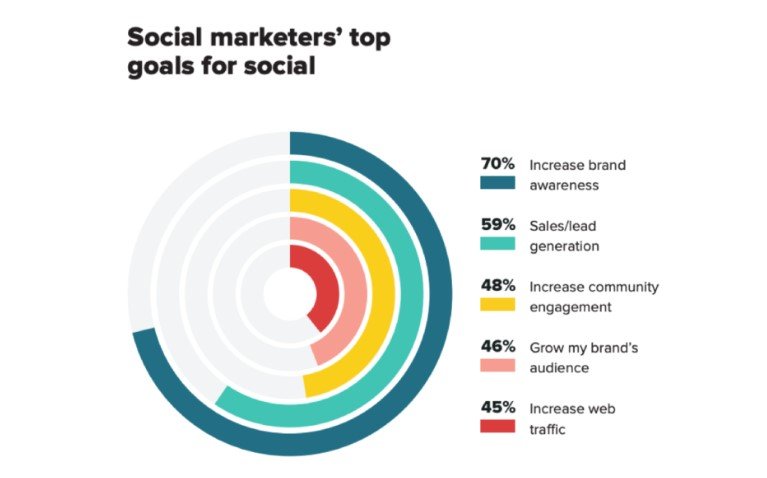
Alternatively, turn those emotional keywords into case studies or experiments:
- How I Increased Sales by $22,000: A Step-by-Step Case Study
- Case Study: How an Ecommerce Newbie Boosted Sales
- 9 Proven Strategies That Generated $11,000+ in Revenue
These types of headlines don’t just grab attention—they build trust by offering tangible proof and real results.
Build Engagement on Your Own Platform
In today’s digital world, social media offers an incredible opportunity to connect with your audience. If you’re not marketing yourself on social platforms, you’re likely missing out on a large portion of potential followers.
However, it’s not just about having profiles and engaging with users; it’s about guiding your audience to take the next step. Your ultimate goal should be to move followers from social media to your own platform—be it your blog, website, or email list.
Unlike social media platforms where you don’t own the connection, your blog and email list provide full control over your communication with your audience. Even if you have a solid following on social, don’t overlook the importance of nurturing your blog audience.
Use social media to grow your presence, but ensure it’s driving traffic to your own space, where you can guide the customer journey, grow your email list, and build lasting relationships with your subscribers.
Maximize Your Content’s Reach by Repurposing It
Blogging is an excellent way to connect with your target audience, especially when your posts are shared across social media channels. But how do you increase the referral traffic to your blog?
It’s time to think outside the box. While inbound marketing is effective, diversifying your efforts can yield even better results. Many of your target audience may not have visited your blog yet, but they’re active on other platforms like YouTube, Slideshare, and more.
To reach them, you need to be present on these platforms. Don’t let your valuable content fade into obscurity. Repurpose it to make the most of it.
Repurposing involves taking your existing content and transforming it into different formats to reach a wider audience. For example, you could turn a well-performing article into a PDF report or an eBook. You could also create a PowerPoint presentation and upload it to Slideshare or design an infographic from a case study.
But remember, not all content is suitable for repurposing. Focus on your highest-performing content—pieces that brought measurable results the first time around.
Leverage User-Generated Content
User-generated content (UGC) is a powerful tool for many brands. When companies encourage customers to create content for them, they benefit in two ways: they save time and money, and they gain authentic, compelling content that resonates with their audience.
A great example of this is GoPro, which frequently features content created by its customers. For instance, a video made by an enthusiastic GoPro user has over 13 million views, driving brand awareness without costing GoPro a dime. The user did all the work, and the brand simply reaped the rewards.
Capitalize on Trending Topics
There are always trending topics circulating online, and you can use them to enhance your content marketing strategy.
How? By aligning your content with trending topics.
For example, Hootsuite cleverly used the popularity of Game of Thrones to create a video called “Game of Social Thrones.” This allowed them to connect a trending topic to their brand in a fun and creative way.
You can easily find trending topics using tools like Google Trends. Simply browse the topics on the home page, which highlight what’s getting attention in real-time. This can help you create content that taps into current interests and boosts visibility.
However, always keep your brand’s image in mind. Avoid associating your brand with topics that don’t align with your values or message.
Frequently Asked Questions (FAQs)
Content marketing is a strategic approach focused on creating, publishing, and distributing valuable, relevant, and consistent content to attract and retain a clearly defined audience. The ultimate goal is to drive profitable customer actions by building trust and authority.
At its core, content marketing is about creating valuable content that helps build awareness and drive conversions. It can take many forms, from blog posts and social media updates to videos and infographics.
Examples of content marketing include a branded YouTube channel, an eBook, a blog like Neil Patel’s, or a newsletter such as Morning Brew. All of these are content marketing tools used to engage an audience and drive business growth.
Some common types of content marketing include blog posts, social media updates, videos, podcasts, eBooks, white papers, and even paid ads.
The content marketing funnel consists of four stages: awareness, consideration, conversion, and loyalty. Each stage helps guide potential customers through their journey toward becoming loyal followers.
Defining clear goals aligned with business objectives
Identifying and understanding your target audience
Conducting keyword and competitor research
Planning and creating a content calendar
Producing high-quality and engaging content
Promoting content through various channels
Measuring performance and optimizing strategies
To become a content marketer, you can start by learning the basics of content creation, SEO, and digital marketing. Develop skills in writing, video production, and analytics tools. Building a portfolio with examples of your work and staying updated with marketing trends are also crucial.
Content marketing involves creating valuable content to engage and convert an audience, while SEO (Search Engine Optimization) focuses on optimizing content to rank higher in search engine results. Together, they drive organic traffic and boost online visibility.
Content, which should be high-quality and engaging
Consistency in publishing and messaging
Context, ensuring the content aligns with the audience’s needs
The 7 P’s of marketing include product, price, place, promotion, people, process, and physical evidence. These elements are used to design strategies that deliver value to customers and meet business objectives.
Researching and understanding your audience
Planning content topics and formats based on audience preferences
Executing content creation and distribution
Analyzing performance and refining the strategy
The 7 Cs of marketing emphasize customer focus and include customer, cost, convenience, communication, credibility, customization, and consistency. These principles help businesses cater to their audience more effectively.
Start by defining your goals and understanding your audience’s needs. Create valuable content that addresses their pain points, promote it through appropriate channels, and use analytics to measure success and improve over time.
The ten steps include identifying the target audience, setting clear objectives, conducting market research, developing a marketing strategy, creating a content plan, producing content, choosing distribution channels, executing campaigns, analyzing results, and refining strategies.
Content marketing is a subset of digital marketing that focuses on using content like blogs, videos, and infographics to build relationships with an audience. It complements other digital strategies, such as email marketing and social media.
Popular types include blog posts, videos, infographics, eBooks, whitepapers, case studies, podcasts, webinars, email newsletters, and social media posts. Each type serves a specific purpose and caters to different audience preferences.
Conclusion
Wow, that was a lot of insights!
By now, you should have a comprehensive understanding of content marketing, from its fundamental principles to the actionable strategies that can make you stand out. Whether it’s mastering the 7 steps of content marketing, leveraging the 3 C’s, or aligning your efforts with the 7 P’s of marketing, every tip brings you closer to building a memorable brand.
The best part? You don’t need an extravagant marketing budget to start. With the right knowledge, a strategic mindset, and a touch of creativity, you can craft stories that captivate your audience and spark genuine engagement.
Success in content marketing isn’t just about producing content; it’s about creating meaningful connections. When you focus on delivering value, addressing real needs, and sharing authentic, relatable stories, you transform your brand into a trusted voice. The brands that prioritize building these emotional bridges will always lead the marketing game, winning not only attention but the hearts of their audience.
Your journey starts here—embrace it, own it, and make an unforgettable impact.

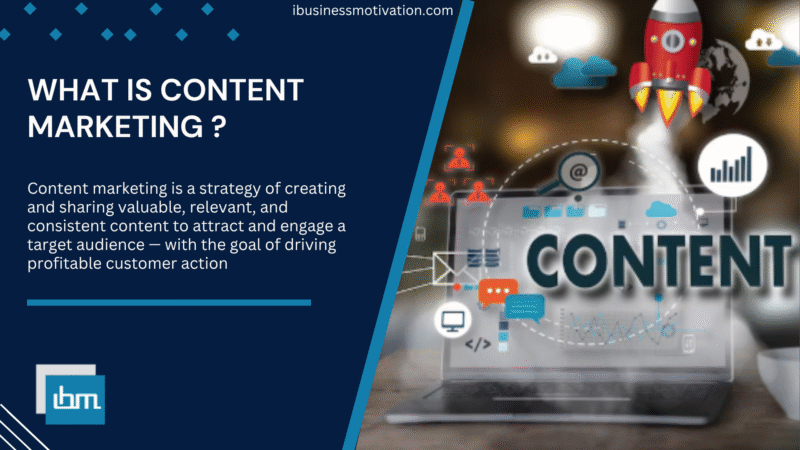

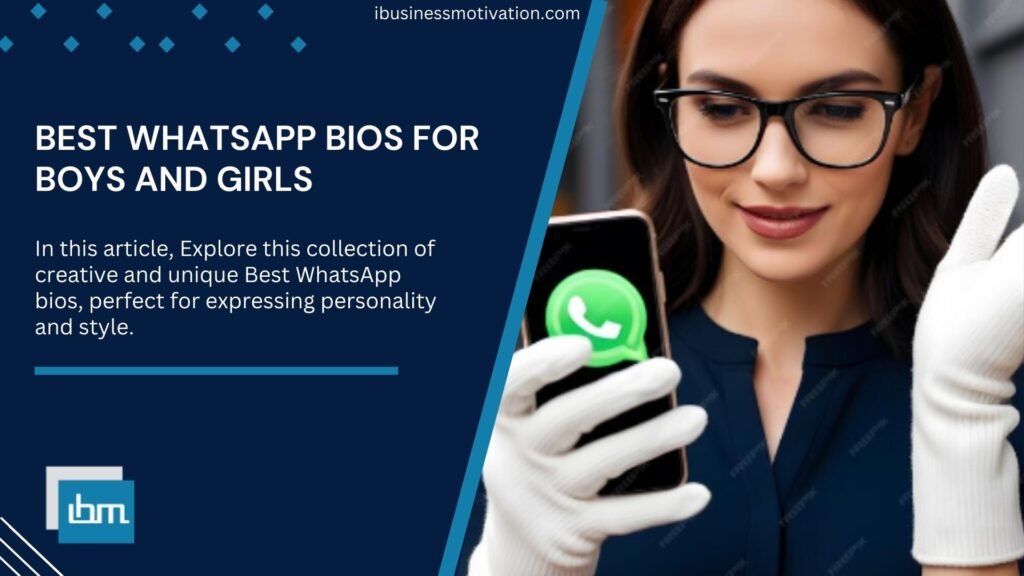

Great Jay! Osam writes emphatically, I got to know in depth about digital content marketing. I am also a blogger. I have got an opportunity to read your blog. Thank you
I wish you success:)